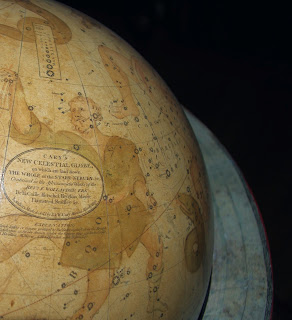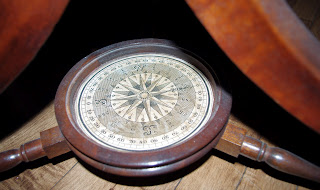Offering of the Day: Cary's New Celestial Globe
London, 1816
43 x 24 inches
$42,000
Literature:
Elly Dekker and Peter van der Krogt, Globes from the Western World Zwemmer, London: 199; Sir Herbert George Fordham, John Cary, Engraver, Map, Chart and Print-Seller and Globe-Maker, Cambridge University Press, 1925; Tom Lamb and Jeremy P. Collins (ed.) The World In Your Hands, London, 1994.
The Cary family firm was regarded as England's leading globe publishers from the early 1790s to its closure in 1850. It was run by brothers John and William Cary. John Cary (c. 1754-1835) was the engraver and businessman, while William Cary (c. 1760-1825) specialized in making mathematical
instruments.
The celebrated Cary family of cartographers and globe makers produced some of the greatest late Georgian globes, and are often considered the best 19th century British globe maker. The firm was started in the late 18th century by John Cary, who often worked in partnership with his brother William Cary, a scientific instrument maker (selling as J. & W. Cary).
The Cary brothers moved their business to 86 St. James's Street in about 1820, leaving the premises at 181 Strand to John Cary's sons George (c. 1788-1859) and John Jr. (1791-1852). While most J. & W. Cary globes were produced from 1791 to 1816, in the 1820s some Cary globes were still issued under that name. Meanwhile, the family also produced a variety of globes under the name G. & J. Cary from the 1820s to about 1850. In 1850, George Frederick Cruchley, a map seller, took over a portion of the Cary business and produced maps and globes from 1850 to about 1876.
 Like two-dimensional cartography, globemaking flourished in the Netherlands in the sixteenth century as the Dutch expanded their exploration and sea trade. Over the course of the seventeenth century, the balance of power gradually shifted towards France, and by the end of the eighteenth century, English cartographers and globemakers were the most prominent.
Like two-dimensional cartography, globemaking flourished in the Netherlands in the sixteenth century as the Dutch expanded their exploration and sea trade. Over the course of the seventeenth century, the balance of power gradually shifted towards France, and by the end of the eighteenth century, English cartographers and globemakers were the most prominent. The techniques and materials of globemaking have evolved quite a bit since the earliest globes, made in the Classical world, were painted directly onto solid spheres. Islamic and Chinese globes were almost always composed of a hollow spherical shell of metal upon which the geographical information was engraved. European globes were heavily influenced by earlier Islamic globes. From these they took many of their most basic features: the mounting of the sphere in a meridian ring, attached at the north and south poles; the setting of the whole within a horizon ring. Yet globemakers in Europe favored different methods and materials than their Islamic counterparts. Most Western globes from the sixteenth century on were made from a sphere composed of papier maché and plaster, which was then covered with strips of paper, called gores, upon which the cartographic images had been printed beforehand. In some cases, gores that were never assembled into a globe have survived, and some publishers even published them in book form, as finished works in and of themselves.
The innovation of assembling globes from gores streamlined and facilitated the process, and remained the favored method of globemaking until the twentieth century. The method developed in response to a cultural movement that treated globes as symbols of status, education, and wealth.



Comments
Post a Comment